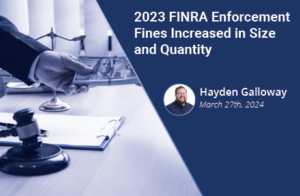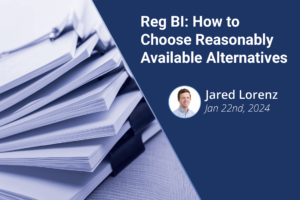January 22nd, 2024 | Hayden Galloway, Product Manager, CapitalROCK
The Department of Labor is still deciding, again, on the scope of transactions financial institutions and their representatives qualify as acting financial advice fiduciaries. The status quo is currently changing this year and will likely continue to be in flux. Currently, PTE 2020-02 is the most widely used exemption. In the exemption, the Department of Labor (DOL) required the Retrospective Review. The PTE 2020-02 Retrospective Review is how firms audit their transactions proving they met the requirements for exemption in the previous year and make corrections where necessary.
What is in PTE 2020-02 Retrospective Review?
This will be the second year that firms participate in conducting their retrospective review for the Department: outlined in PTE 2020-02, “Improving Investment Advice for Workers & Retirees Exemption.” Within the next six months, firms must complete their 2023 reviews. The idea is to search and sample the transactions your firm recommended (involving retirement accounts) for compliance failures during the previous year: which firms are likely to find.
The DOL laid out the expectation that to receive the exemption, firms must “detect and prevent violations of, and achieve compliance with, the Impartial Conduct Standards and the institution’s own policies and procedures.” [1]
After the work of reviewing transactions of interest to the DOL, the assignment is to create a report, most importantly, signed by a senior executive officer. It appears the DOL wants the executive team to have more skin in the game by giving their personal attestation to the information compiled for the report. If there is a change in a firms’ policies and procedures, then the report will implement and document those changes, to further align their practices with the Department’s Impartial Conduct Standards.
The DOL did not give a lot of information on how to correct compliance failures, but part of the review is to make those corrections, report them, and document them as part of the report signed by an executive officer. This report will detail the homework the firm did on reviewing transactions involving retirement accounts, affirming that they acted in the best interest of the investor served. For extra credit, the firm must self-regulate, finding and correcting mistakes made, or else.
Self-Regulation
What most regulatory bodies are hoping for, and the DOL’s PTE 2020-02 seems to encourage, is firms conducting regular self-inspection and regulation. This is built into the new DOL regulation. The exemption includes an item, Section II(e), which allows Financial Institutions to correct their own violations to the exemption. The Department will not punish non-exempt prohibited transactions if firms follow through on the instructions of self-regulation and correction. That would imply that the following circumstances are met: 1. The retirement investor cannot lose out on the investment: but if they do, the Financial Institution must make the investor whole. 2. When the firm makes the correction, the Department must be notified within 30 days via email. 3. Corrections that need to be made must be done within a 90-day window of when the firm “should have learned of the violation.” 4. The correction made needs to be part of the written report. [1]
In the final report for the retrospective compliance review, firms are expected to document the corrections made and how they made investors whole (where necessary).
What type of transactions does the DOL consider? A History.
To truly understand what the Prohibitive Transaction Exemption 2020-02 is exempting, it would be helpful for the reader to understand a little history of how the definition of a financial advice fiduciary has evolved.
The Employee Retirement Income Security Act of 1974 (ERISA) and the Internal Revenue Code of 1986 introduced what are prohibited transactions for fiduciaries. The intention of the law was to prevent fiduciaries from principal transactions (acting on their own behalf), self-serving, and profiting from third parties when involved in retirement accounts and IRA transactions. PTE 2020-02 provides an exemption, allowing fiduciaries to be compensated in some situations where they would be considered a fiduciary. With the release of PTE 2020-02, the DOL gave their final (for now) interpretation of when advice to roll over assets from a retirement account plan to an IRA is considered financial advice.
In 1975, the Department of Labor released a five-part test to establish how they defined fiduciary status, interpreting the parallel regulations from ERISA and the Internal Revenue Code. If the Department did not already consider a financial professional a fiduciary under the law, their transaction had to pass the five-part test to be “investment advice”. The following five standards, together, constituted financial advice.
“[1] render advice as to the value of securities or other property, or make recommendations as to the advisability of investing in, purchasing, or selling securities or other property (2) on a regular basis (3) pursuant to a mutual agreement, arrangement, or understanding with the Plan, Plan fiduciary or IRA owner, that (4) the advice will serve as a primary basis for investment decisions with respect to Plan or IRA assets, and that (5) the advice will be individualized based on the particular needs of the Plan or IRA.” [1]
Financial professionals that meet each of the five items, and are compensated (in any way), are considered a fiduciary.
If considered a fiduciary, the financial professional cannot perform what the law considered “prohibited transactions” (unless given an exemption). Essentially, a prohibited transaction would include the fiduciary acting in their own interest or receiving payment for any work surrounding the transaction. The DOL attempted to implement exemptions to some prohibited transactions but was throttled in the courts. The Department then implemented a Field Assistance Bulletin (2018–02), outlining how they would temporarily proceed with enforcement, to provide relief for financial professionals to participate in prohibited transactions (as they previously attempted). The Department said it would not pursue prohibited transactions claims against fiduciaries that complied with the “Impartial Conduct Standards” in transactions that they would have deemed as exempt.
The Impartial Conduct Standards has three parts: (1) best interest standard, (2) a reasonable compensation standard, and (3) a requirement to make no misleading statements about investment transactions.
This standard carried through until their final exemption requirements were implemented in PTE 2020-02, which is centered around the Impartial Conduct Standards to receive exemptive status.
What made it to the list in the final exemption? The exemption allows for the following payments that would otherwise be prohibited transactions: commissions, 12b-1 fees, trailing commissions, sales loads, mark-ups, mark-downs, and revenue sharing payments from investment providers or third parties.
PTE 2020-02 introduced the DOL’s new definition of fiduciary advice, expanding and further defining their five-part test. This increased the population of financial professionals and institutions that are fiduciaries, according to the DOL, and need to be aware of the recommendations made to participants of ERISA retirement plans.
Before PTE 2020-02, the DOL used the five-part test from the ERISA law and Internal Revenue Code to determine what was considered financial advice. The DOL expanded what type of advice they considered to be given on a “regular basis.” Post 2020-02, Advisors and Broker-Dealers are considered to be giving advice on a “regular basis” if they even anticipate and giving guidance on an IRA rollover. The DOL may scrutinize all transactions involving ERISA plans: especially when considered rolling that to another asset. Thus, financial professionals and institutions dealing with any transaction touching qualified money, or investments in ERISA retirement plans, may be tested under the new definition of a fiduciary.
The retrospective review is also required to receive exemptive status. Along with the review, here is what the DOL laid out as required: The exemption requires Financial Institutions and/or their Investment Professionals to:
- “make certain disclosures to Retirement Investors
- adopt written policies and procedures
- document the basis for rollover recommendations
- prepare a written report of the retrospective review
- maintain records showing that the conditions have been met to receive relief under the exemption.” (p. 60)
How should my firm prepare our annual review?
The purpose of the annual review, stated explicitly:
“(1) Detect any business models creating conflicts of interests. (2) Test the adequacies of the policies and procedures, (3) identify any compliance areas for improvements, and (4) update and modify its compliance system based on the review results.” [1]
Justify your firm’s ability to use the DOL’s exemption by completing the requirements stated in PTE 2020-02. As in so many areas of compliance, practice makes perfect. The sooner a compliance failure is found, the easier it is to correct the mistake. That makes a great argument for ongoing sampling of these types of transactions, to catch faults faster. Surveillance teams can compile information from these types of transactions with the help of technology providers and IT teams. On a periodic basis, your team can conduct a simple random sample to select transactions to scrutinize in more detail. You can document which of these transactions you diligently reviewed throughout the year and include them in your annual report.
Use your existing annual review and testing practices and ensure that the DOL’s annual review requirements are integrated. Most firms are already completing annual reviews for the SEC and FINRA Rule 3130. Incorporate the requirements for the DOL’s annual review in your current process.
Record when you change your process. A key aspect of logging policies and procedures is starting with the status quo and improving and documenting those changes. Seek legal advice on how to correct infractions when they are found. Do not wait to review transactions, make the review of transactions that fall into the purview of the DOL part of your systematic review process. Just as you conduct internal exams, periodically sample your DOL transactions. Checklists and rule-based systems catch errors in real time. They allow humans to operate in a more fault tolerant space, and confidently sift through mountains of information quickly and accurately.
Sources:
https://www.govinfo.gov/content/pkg/FR-2020-12-18/pdf/2020-27825.pdf
The material contained in this communication is informational and general in nature. The material contained in this communication should not be relied upon or used without consulting appropriate legal or financial representatives to consider your specific circumstances. This communication was published on the date specified and may not include any changes in the topics, laws, rules, or regulations covered.






